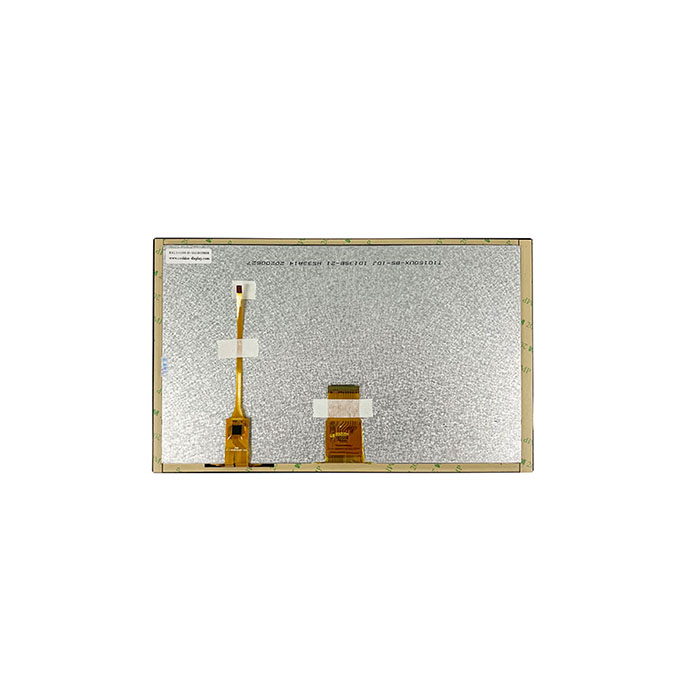Views: 332 Author: Reshine Display Publish Time: 2023-12-07 Origin: Site









Our digital world has spoiled us these days. We have high-definition graphics, vibrant colors, and an unrivaled visual experience that seems to improve over time. These experiences are now a reality thanks to innovative display interface technology such as the Mobile Industry Processor Interface Display Serial Interface (MIPI DSI).
Because of its functionality and efficiency, this interface was originally designed for use in smartphones but quickly became a popular choice for tablets, the automotive industry, smartwatches, and other embedded displays. Today, the MIPI DSI interface is the standard interface for LCDs used in medical devices, industrial machinery, mining equipment, and virtually all other safety-critical applications.
But why has MIPI DSI become such a mainstay in LCD technology, and why is it the go-to option for so many applications?
The MIPI DSI is a fast interface created by the MIPI Alliance. While other display interfaces, such as parallel and RGB types, require a much larger number of pins to support the demanding resolution and refresh rates, the MIPI display can do so with fewer pin connections. Related product:10.1 Inch Mipi Lcd Display.
MIPI displays are useful for delivering high-quality graphics to viewers while reducing complexities in hardware costs, signal routing, and circuit board design. This means benefits for both the user and the company developing the technology. Designers no longer have to struggle to balance the demands of display quality, power, and speed, because this sleek interface can combine low power and high speed at the same time.
Given all of this, MIPI is an obvious choice in the display industry due to its ease of connection and support for high resolution and color depth. Several important factors combine to make all small-screen LCDs excellent. People want a long battery life, bright colors, and a fast refresh rate, and the MIPI interface provides an LCD that meets all of these requirements.
Previously, user interfaces made use of simple, monochromatic displays. They were not usually associated with dynamic visuals and vibrant colors and instead served a more functional purpose. On the contrary, our current landscape is brimming with interactivity, full-color, and high-definition options, and the MIPI DSI has managed to outperform many other competing interfaces in terms of reputation. Let's see how MIPI interfaces stack up against the competition:
HDMIs (High-Definition Multimedia Interfaces) are commonly associated with video and audio streaming, particularly in the home. When it comes to transmitting uncompressed media, HDMI is an excellent choice, but it frequently necessitates more power and bandwidth than MIPI DSI. MIPI DSI reduces power consumption and transmission bandwidth by using a compressed video stream. Given the importance of battery life and data transfer, this is a significant benefit for applications such as mobile devices or other portable instruments.
Red, Green, and Blue (RGB) interfaces were once common in older handheld devices such as PDAs and gaming devices. Each pixel in the display was made up of these colors, which lit up at different intensities to create visuals. The disadvantage of these screens is that they only support lower resolutions, consume a lot of power, have higher electromagnetic interference, and complicate device design – all of which are mitigated in MIPI DSIs.
LVDS (low-voltage differential signaling) displays are common in laptops and cellphones because they are considered a high-speed communication protocol, similar to MIPI DSI. LVDS displays, on the other hand, use the Flat Panel Display Link protocol, whereas MIPI displays use the MIPI DSI protocol. This has the added benefit of lowering volume costs and selecting a screen specifically designed for use in a compact application, as we are so accustomed to today.
So you're looking for a new LCD for a specific purpose. There are numerous factors to consider before making your final decision, including:
Resolution refers to the clarity and sharpness of the images and video on the display. This factor typically correlates with power demand, so strike a balance.
Size: The size of the display will determine how the user interacts with the device. While larger displays may be easier to view, the device itself will have to expand and consume more power.
Power consumption: Will the screen be used in a battery-powered device or one that is constantly plugged in?
Cost: While you may want the best performance available, the price of the screen should be appropriate for the device's intended use.
Compatibility with the device's CPU and operating system: The LCD should be compatible with the device's CPU and operating system.
Operating conditions: Will the LCD be used in outdoor applications, in inclement weather, or indoors? Screens that can function in high-brightness scenarios, for example, may be required depending on the environment.
Touchscreen capability: Because touchscreen is frequently the standard - with our smartphones, smartwatches, video game devices, self-checkout, and even building elevators - it is critical to consider whether the LCD supports this function.
Our digital experience will continue to be defined by speed, definition, and power efficiency, which means that the LCD you choose will determine the experience you provide. In the world of display technology, there is no doubt that the MIPI DSI has demonstrated why it is the best choice for almost every SOM (system on module) on the market. Its ability to streamline design and connectivity, improve visual dynamics, and extend battery life all attest to its future-proof nature in this tech space.
Can LVDS LCD Displays Improve Visual Performance in High-Speed Video Applications and How?
How Do You Ensure Compatibility and Optimal Performance When Working with MIPI LCD Displays?
What Are the Advantages of Mipi LCD Displays in Mobile and Wearable Devices?
How Does Mipi Interface Technology Enhance LCD Display Performance?

